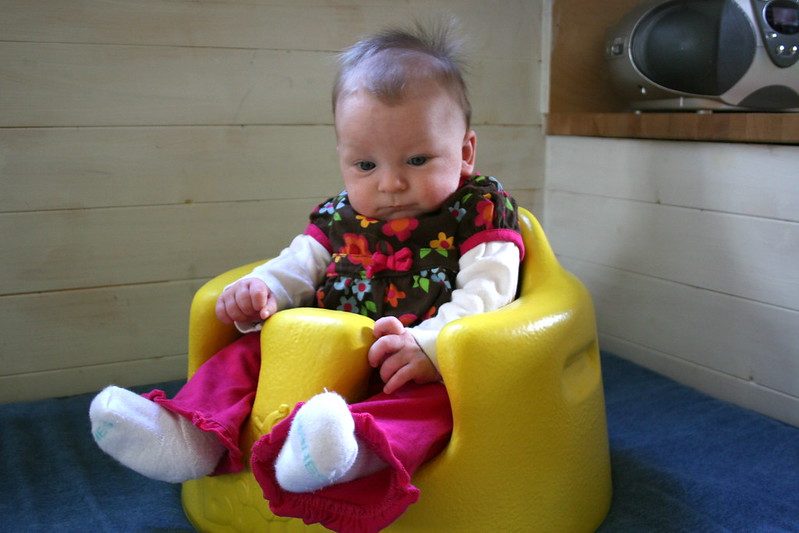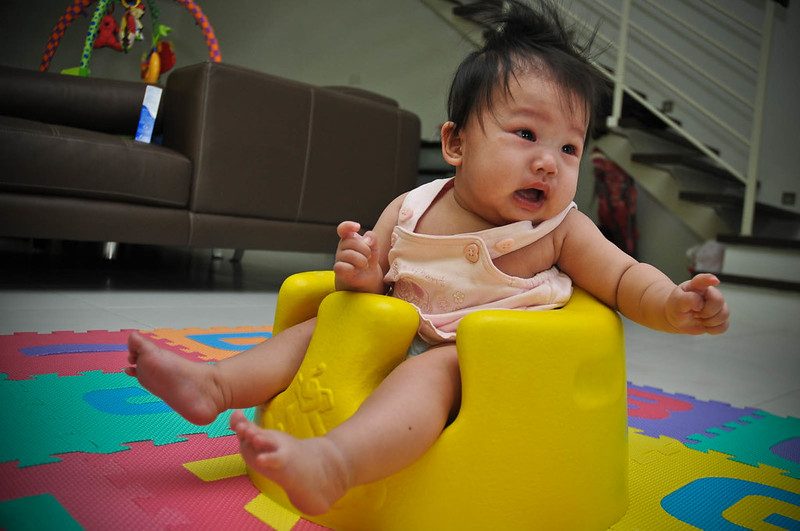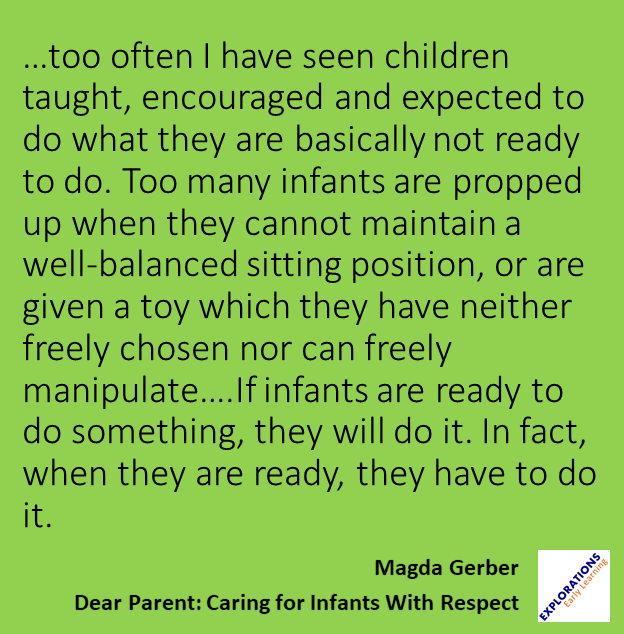
Table of Contents
Containerized Kids, also known as Container Baby Syndrome, is a term of art referring to children who spend an abundance of their time in containers like car seats, bouncy seats, high chairs, baby swings, exersaucers, and Bumbo seats. The term gained notoriety after Richard Louv’s Last Child In The Woods was published. In that book, the author attributes the term to University of Maryland professor of kinesiology Jane Clark. Louv writes, “Most kid-containerizing is done for safety concerns, but the long-term health of these children is compromised.” (Richard Louv. Last Child in the Woods: Saving Our Children From Nature-Deficit Disorder (Kindle Locations 441-446). Kindle Edition).
More About Containerized Kids
Containerizing kids is a problem because it limits their movement and restricts their ability to explore their environment. These devices also often force children into developmentally inappropriate positions that they are unable to get into on their own— plopping children who are unable to sit on their own into Bumbo seats, for example.

Another concern is the amount of time children spend confined to these devices. Young children can spend most of their waking hours in these restrictive containers. Something they are not always happy about.

The problem of Containerized Kids concerns pediatricians, pediatric occupational therapists, and others involved with children’s development. An article at moms.com proclaims:
With all the latest and greatest scientifically-designed baby equipment out there, many parents assume that the most recent baby gear is often better and safer. However, pediatricians and occupational therapists are warning parents that they’re seeing an unsettling trend. More and younger babies and toddlers are showing up at doctor’s offices with head issues. Concerned parents assure the doctor that they’ve purchased the safest gear for baby, but are often stunned to learn that the gear is to blame for the issues.
According to Dana Thomsen, PT, DPT, PCS, when children spend much of their day in containers, they risk developing:
- Plagiocephaly: flattening of their head
- Torticollis: tight neck muscles resulting in a neck tilt
- Delay in motor milestone acquisition
- Impacting the development of the hips and spine
Yet, parts of the early learning world seem content to constrain the movement of infants, toddlers, and preschoolers (see Beware The Preschool Chair). Limiting children’s ability to move about and explore the world impacts the development of tactile discrimination skills and sensory integration. It can also restrict social interaction and contact.
More Than Safety
Above, Louv mentions safety as a reason for containerized kids. Here at Playvolution HQ, we agree–and think there are a couple additional reasons: convenience and what we’ll call developmental rush.
These devices are frequently used to make life easier for adults. Containerized kids are easier to manage. Containerized kids stay out of trouble. Overstimulating a baby with a swing’s motion, music, and vibrations puts them to sleep. Trapping a mobile infant in an exersaucer keeps them from getting into things. Strapping a two-year-old in a highchair keeps them still during meals. Problems solved.
If you’re a parent and Baby Belinda needs to spend some time in a bounce seat so you can inhale a bit of food or pee, use the bounce seat. The same goes for similar situations in child care settings. Short term use of these devices is convenient and can help keep kids safe. AND, too many kids spend too much time in these contraptions because they are an easy alternative to creating a developmentally appropriate play environment.
These things are also utilized in attempts to rush development. Some mistakenly believe that propping an infant in a Bumbo seat will lead them to sit on their own sooner. Or that time in a walker helps infants learn to walk. Or that spending a lot of time sitting in chairs prepares preschoolers for kindergarten. The exact opposite is true. These things don’t speed up development–it appears they can slow it down.
The Alternative To Containerized Kids
A better option is to free the containerized kids and let them roam freely and develop physical skills at their own pace, using the containers in a limited and thoughtful fashion.


Playvolution HQ is full of resources for building such environments. Here are a few:
Thoughts On This Entry?
I’d love to hear your thoughts on improving this entry and suggestions for additional glossary additions in the comments below. You can also contact me with comments or concerns.
Post Author
Jeff Johnson is an early learning trainer, podcaster, and author who founded Explorations Early Learning, Playvolution HQ, and Play Haven.


Leave a Reply